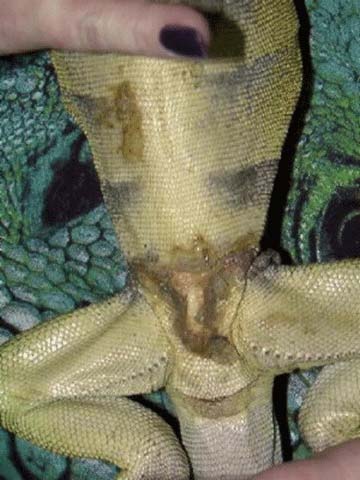Leopard geckos (Eublepharis macularius) are wonderful companions. They are easy to care for and have tons of personality. Leos are long lived (some have been reported to live 25 years in captivity) and easy to keep and breed in captivity. These geckos are nocturnal insectivores from the deserts of south Asia, Pakistan and India. They inhabit rocky crevasses and scrub land. They are solitary and territorial in the wild. Leos come in a variety of color morphs that appeal to all keeper preferences.
Leopard geckos are terrestrial (they cannot climb vertical surfaces like other gecko species). They also have eyelids, unlike many other reptiles. They often clean their eyes with their tongues which is adorable to watch!
Leopard gecko's are best housed in captivity in long terrariums (rather than high terrariums) with screen lids. Males should never be housed together but can be housed with a female or two if the enclosure is large enough.
Leopard gecko's in captivity have a tendency to eat their terrarium substrate so things like sand, cocofiber or soil should be avoided. Sand can also damage their delicate eyes. They are best housed with easy to clean liner like paper towels or reptile carpet (be careful with the carpet, it can be rough on their soft skin).
Leopard geckos are nocturnal so there is some debate about the need for a full spectrum UV bulb. They should always have a basking bulb on the warm side of their enclosure along with an under-tank heat pad (they thermo-regulate via radiant heat). The warm side of the enclosure should be between 92-100 degrees Farenheit during the day and in the mid 80's at night.
Leopard geckos can have trouble with retained shed. They often lose the tips of their toes and tails or get eye infections from retained shed. A moist hide (exp. a plastic tub with an entry and moist moss) should always be provided to help with shedding.
Leopard geckos are insectivorous and should be offered a wide variety. They will occasionaly eat pinky mice but these should be offered very sparingly. Obesity is a major health problem in captive leopard geckos so weight should be monitored consistently. Leopard geckos should also have free access to a plain calcium powder. Most will eat calcium out of a small dish readily as they need it. Calcium supplementation is especially important for females that are gravid.
Leopard geckos are enjoyable to watch and interact with. If housed and cared for properly, they are one of the easiest and most rewarding captive herps.
For more info:
Leopard Gecko Care (site is translated to english, can be cumbersome)
Leos on Wikipedia
This video is my leopard gecko "Brutus" eating a Dubia roach.

